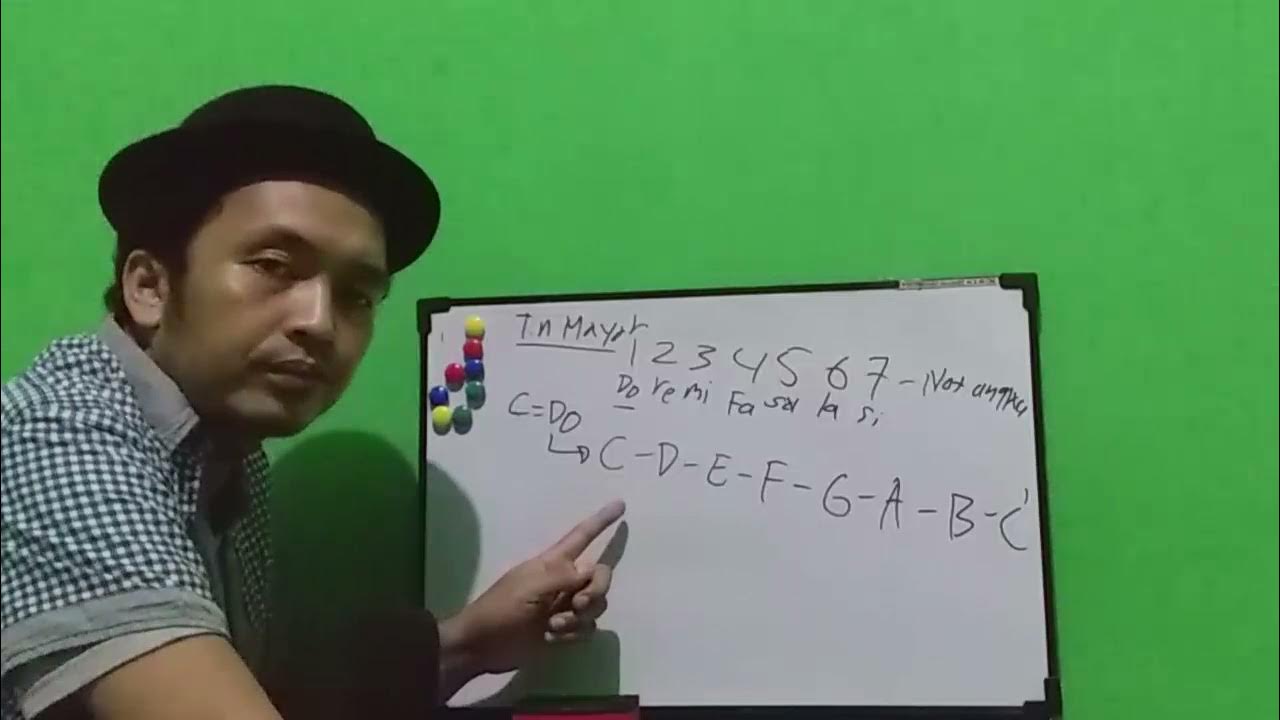Cara praktis dalam mempelajari suling sunda laras pelog
Summary
TLDRThis video lesson introduces the basics of playing the Sundanese six-hole flute (suling) in the Pel scale. It covers essential techniques such as hand positioning, breath control, and finger flexibility, guiding learners from basic to more advanced skills. The instructor emphasizes the importance of clear note production, breath strength for varying pitches, and creative expression through ornamentations and improvisation. Learners are encouraged to practice consistently, starting with simple melodies and gradually exploring complex ones. The lesson fosters both technical proficiency and personal creativity, inviting further exploration and hands-on practice.
Takeaways
- 😀 The lesson focuses on learning to play the Sundanese 6-hole flute (suling) in Laras Pel tuning.
- 😀 The first step in learning the suling is familiarizing yourself with its parts: the body, holes, and the suliwer (the part at the top that helps produce sound).
- 😀 Proper hand positioning is crucial: left hand on top and right hand below, ensuring fingers cover the holes completely for clean sound.
- 😀 Breath control is key to playing the suling. The force of your breath will affect the tone and pitch of the notes.
- 😀 Finger flexibility is important. Practice covering the holes cleanly and quickly to improve control and precision.
- 😀 Start by practicing simple melodies to familiarize yourself with the notes and their sounds.
- 😀 The suling uses a pentatonic scale, which differs from the common diatonic scale. This scale requires careful control of breath for varying pitch levels.
- 😀 Practice simple melodies like 'Da Mi Na Ti La Da' to build a foundation in playing the suling.
- 😀 As you progress, explore creating embellishments (leotan) or variations to personalize and express your music.
- 😀 Don't be afraid to experiment with variations and creative flourishes in your playing. This helps you develop a unique style.
- 😀 Consistent practice and patience are essential for mastering the suling. Mistakes are part of the learning process, so embrace them and keep practicing.
Q & A
What is the main topic of the lesson in the script?
-The main topic of the lesson is learning to play the Sundanese flute (Suling), focusing on the six-hole version in the Pel scale.
What are the key components of the Sundanese flute (Suling) introduced in the lesson?
-The key components of the Sundanese flute introduced are the flute body (Awak), the holes (Lubang), and the whistle (Suliwer) for sound.
What is the difference between the Laras EE and Laras Empat in Sundanese flutes?
-The Laras EE and Laras Empat refer to two different types of Sundanese flutes, with the Laras EE having a distinct pitch and tonal quality compared to the Laras Empat.
What is the correct hand position for playing the Sundanese flute?
-The correct hand position involves placing the left hand on top of the flute and the right hand below. The fingers should completely cover the holes to ensure a clean sound.
How does breath control affect the sound production on the Sundanese flute?
-Breath control is crucial for sound production. More forceful breath is required for higher notes, while softer breath is needed for lower notes to control pitch and tone quality.
What are the five main stages in learning to play the Sundanese flute as outlined in the script?
-The five main stages are: 1) understanding the flute's parts, 2) practicing hand positioning, 3) mastering breath control, 4) developing finger flexibility, and 5) practicing simple melodies.
What is the importance of finger flexibility in playing the Sundanese flute?
-Finger flexibility is essential for smooth transitions between notes and achieving accurate pitch. It helps in playing complex melodies and ensuring clean sound production.
How can a learner start practicing with the Sundanese flute?
-A learner should start by practicing basic melodies, such as the Pel scale (Da Mi Na Ti La Da), and gradually work up to more complex tunes while focusing on breath control and hand positioning.
What is 'leotan' and how is it used in playing the Sundanese flute?
-'Leotan' refers to musical embellishments or variations added to a melody. It allows for creativity and expression in playing, helping to personalize the music and make it more interesting.
What advice is given regarding mistakes and learning the flute?
-The advice is not to be afraid of making mistakes. Mistakes can lead to new creative sounds, and continuous practice will help improve technique and musicality over time.
Outlines

Cette section est réservée aux utilisateurs payants. Améliorez votre compte pour accéder à cette section.
Améliorer maintenantMindmap

Cette section est réservée aux utilisateurs payants. Améliorez votre compte pour accéder à cette section.
Améliorer maintenantKeywords

Cette section est réservée aux utilisateurs payants. Améliorez votre compte pour accéder à cette section.
Améliorer maintenantHighlights

Cette section est réservée aux utilisateurs payants. Améliorez votre compte pour accéder à cette section.
Améliorer maintenantTranscripts

Cette section est réservée aux utilisateurs payants. Améliorez votre compte pour accéder à cette section.
Améliorer maintenantVoir Plus de Vidéos Connexes

Apa itu suling Sunda?

Cara Membuat Seruling Bambu Nada E Bass | 100 % akurat

Cara Mencari Tangga Nada Mayor berdasarkan Interval atau jarak Nada

AKSARA SUNDA (SWARA, NGALAGENA, ANGKA) MATERI BAHASA SUNDA SMA KELAS 10

Gr 9 SS History | Term 1 Lesson 1 | An introduction to WW2

Suzuki Method VIDEO GUIDANCE No. 5 lessons in tonalization 3
5.0 / 5 (0 votes)
